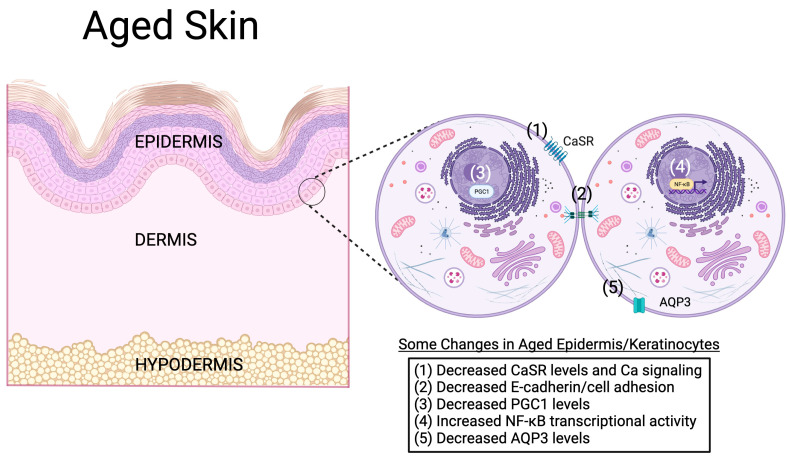Figure 6.
Possible molecular mechanisms of keratinocyte and epidermal aging. In the aged epidermis, a number of molecular changes have been observed. For example, aging keratinocytes in the epidermis have been found to express lower levels of the calcium-sensing receptor (CaSR), leading to impaired calcium signaling and reduced E-cadherin levels and cell adhesion [95]. The levels of the transcriptional co-activator peroxisome proliferator activator-γ co-activator-1 (PGC1) are also altered with age, and the genetic knockdown of PGC1 expression reproduces characteristics of aged keratinocytes/epidermis [77,81]. On the other hand, the transcriptional activity of the transcription factor, nuclear factor kappa-light-chain-enhancer of activated B cells (NF-κB), is increased with age [13]. The ability of NF-κB to induce the expression of inflammatory mediators might underlie chronic low-level inflammation associated with aging. Finally, the mRNA and protein expression of the aquaglyceroporin, aquaporin-3 (AQP3), is reduced in aged skin [88,89,90]. Because evidence supports an important role for AQP3 in keratinocyte proliferation, differentiation and migration, as well as skin hydration, wound healing and permeability barrier function [28], decreased levels of this protein might mediate, at least in part, age-related skin changes. Created with Biorender.com.

